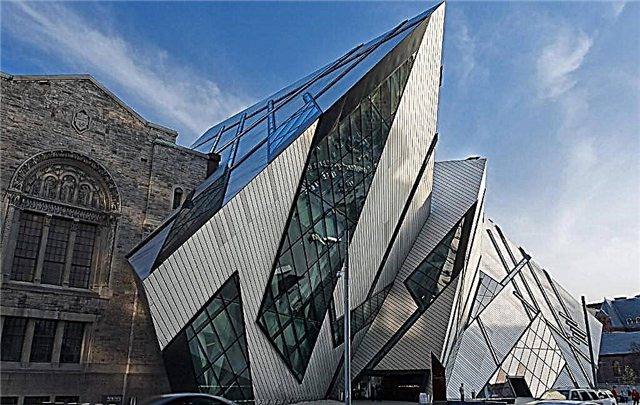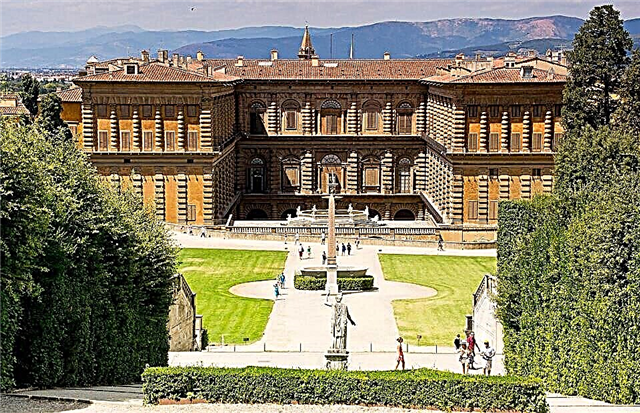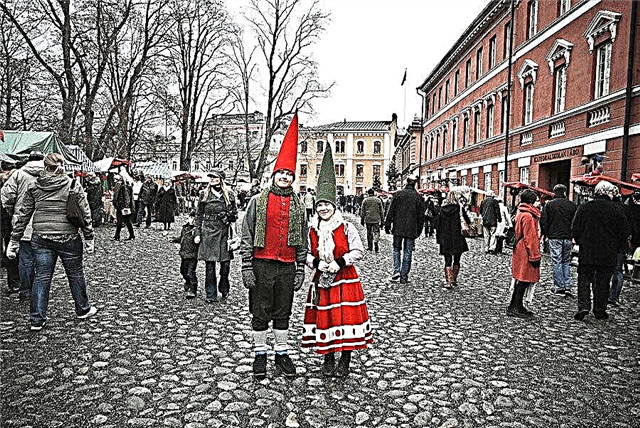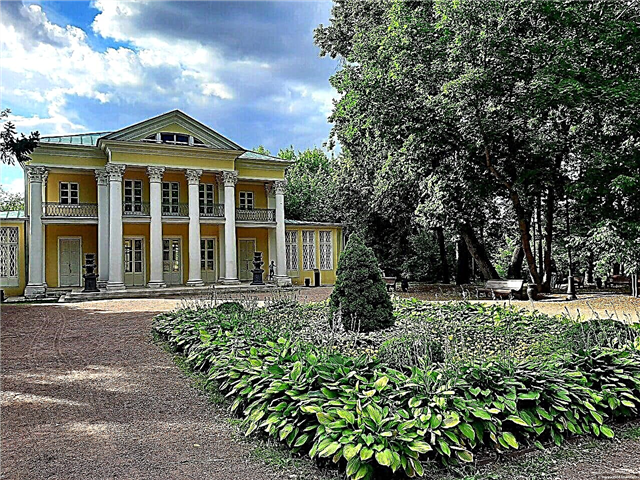On the famous refuge of the Italian mafia in Sicily, there is a unique underground burial - the Catacombs of the Capuchins in the capital of the island of Palermo. This peculiar Museum of the Dead is located under the Capuchin Monastery (Convento dei Cappuccini) and contains about 8 thousand mummified remains of monks, representatives of the local aristocratic elite, clergy of past eras, being a spectacular and partly scientific object of research.
History of the catacombs

The historical roots of the Sicilian "kingdom of Hades" stretch back to the 16th century. At that time, based on the Apennine Peninsula, the Order of the Capuchins moved to about. Sicily, where it has become quite popular. Its representatives were against burial far from their native monastery, so it was decided to organize a cemetery directly on its territory. The first grave in the catacombs appeared at the end of the 17th century; later, other remains of formerly deceased monks were moved here. Over time, there was not enough space in the crypt, and the Capuchins gradually dug a rather long corridor. Over time, the patrons of the monastery began to be buried here. Additional corridors and cubicles were also dug for their burial.

Until 1739, burials in the crypt were sanctioned either by local archbishops or by the leaders of the order. Later, this right passed to the abbots of the monastery. From the 18th to the 19th centuries, the Capuchin underground took on the role of a prestigious cemetery, where the clergy and high-ranking residents of Palermo were buried. In 1837, the burial of the deceased in a visible form was prohibited. Despite this, the ban was often bypassed, leaving the "window" or removing the wall of the coffin in order to see the deceased.
They stopped burying in the catacombs only at the end of the 19th century (1882). After 1880, exceptions were made for some petitioners, and several more embalmed bodies were placed here, among which was Rosalia Lombardo. It was this child who became the final person buried in the Capuchin catacombs.
The originality of the museum

This museum is unusual in that it is nothing more than burial galleries located underground. They enclose within their walls a mass grave - more than 8 thousand noble people of Sicily of the XVI-XIX centuries. The crypt is still in great demand among tourists today. At the Palermo exposition of mummies, the bodies of the deceased lie, sit, stand and even hang on hooks, forming compositions. The remains of the deceased rest in an open, viewable form. From the things they wear, one can easily guess the fashion of those eras in which they were buried.

The catacombs themselves are more like a labyrinth - a network of corridors and compartments, in which every centimeter is filled with mummified dead. The spectacle is not for the faint of heart, sometimes there is a feeling that the mummies are about to start moving. All "exhibits" located in the Capuchin monastic catacombs are divided: according to the status occupied during life, professional, gender and other characteristics. Here you will find corridors: for monks, priests, craftsmen, men and women, virgin girls and immaculate babies. In addition, there are: a "new" corridor, in which they were buried since 1837, after the decision was made to ban the exposition of the bodies of the deceased in the open, and a chapel.
Description of the catacombs

Such a huge crypt was formed under the Capuchin monastery in the 16th century, when it became necessary to bury the Capuchin monks. The number of inhabitants of the monastery increased every year, and, accordingly, the number of dying, so the dungeon continued to lengthen, turning into grandiose catacombs, divided into corridors.
At first, monks were buried in them, whose bodies were previously dissected, embalmed with vinegar and dried. When it was found that the composition of the soil in the catacombs contributes to the preservation of the remains, many relatives of the deceased nobility of Palermo also began to want the bodies of their relatives to take place in the niches of the catacombs. This is how special corridors were formed, where people with different social status rest. A visit to the Capuchin catacombs is not a sight for the faint of heart, but at the same time excitingly interesting. Now access is prohibited to the corridor with the remains of especially revered monks, mummies of the most terrible kind are not put on display.

Monks corridor
Capuchin Silvestro was the first to be buried in the corridor of monks, formed from the crypt, after which the remains of previously deceased monks were moved here. In the most ancient corridor, especially respected monks found their shelter, who made a significant contribution to the development of the Cappuccini order and the monastery. The mummies are dressed in traditional Capuchin robes with a canvas hood and a rope around their necks. Today, access to the site is closed for religious and scientific reasons.
Corridor of men
The mummies of ordinary male citizens who donated a lot of money for the maintenance of the monastery are housed in a rather spacious room with stone walls whitewashed with lime. Many of them wear well-preserved burial garments, contrasting with the terrible sight of the empty eye sockets on the turtles. By the type of clothing, one can conclude about the social and financial situation of the deceased. Some of the men are dressed in simple canvas pajamas, others in luxurious tailcoats and tuxedos, thin shirts with frills or ties. Some of the remains were installed in groups, some are located in separate niches, showing visitors the ugly manifestations of death.
Cubicle of children

In a small corner room with walls lined with painted panels, the remains of young children are buried as the personification of the worst grief of parents. Their bodies are located in coffins installed on pedestals and in niches. The names and surnames of the deceased children are indicated on the tablets placed at individual coffins. By the children's clothes, one can judge with what martyr's love the parents buried their crumbs right here in order to come here, hoping to overcome their terrible grief.
A huge impression is made by the central niche in which a boy "sits" on a rocking chair, holding his little sister in his arms. Frost runs over the skin not only from the sight of dead children, but also from the scale of parental grief, who have lost their "treasures".
Corridor of women
Air attacks in 1943 over Sicily were so powerful that they also touched the catacombs, partially destroying the Women's Corridor, damaging part of the mummies. But even from the surviving remains, one can get an idea of the funeral traditions associated with women. Pre-prepared bodies were dressed in bright beautiful dresses and lace caps. Elegant sandals or shoes were worn on the feet, flirty gloves on the hands, that is, the entire ladies' entourage. Of course, when visiting, it is scary to see the black grin of the mouth and the gaping hollow eye sockets against the background of the snow-white lace of the cap of this or that mummy, but we must pay tribute to the relatives who took care of the respectable appearance of the deceased.
Most of the female bodies rest in open wooden niches-shelves or coffins, the smaller part is in a standing position. It should be noted the well-preserved robes of the inhabitants of the women's corridor. This once again confirms the special atmosphere of the catacombs, which prevents decomposition. The feeling of sadness, mixed with disgust at an unpleasant sight, is comforted by the faint hope that, indeed, the human soul is regaining beautiful flesh.
Cubicle of virgins
The same small corner room as for children - the cubicle accommodates the mummified bodies of virgins.Probably, as a symbol of immaculate virginity, they are fenced off by a metal grill, blocking free access to them. On the heads of the virgins, wreaths of metallic flowers are worn, representing innocent purity.
With sadness, you can consider the beautiful bright outfits of those who did not fully experience the bliss of sensual love, do not know the happiness of motherhood. The whimsical caps that frame the once captivating faces add to the already gloomy contemplation. If these former beauties could imagine that someday they would become the objects of such an impartial spectacle, they probably would not agree to be buried in the open!
New corridor
Despite the ban on burying the dead in the catacombs (1837), there were many who wanted to place the bodies of their relatives there, so a New Corridor had to be formed, which received the dead until 1882.
There are no niches in the walls - the entire area of the corridor along the walls is filled with coffins. They are installed in several rows, regardless of gender and social status of the mummies. A notable feature of the New Corridor is several family burials, where the bodies of both parents are buried along with the bodies of their teenage children. There are also married couples who have not been separated even after death.
Corridor of professionals
The eloquent name of the corridor testifies to the burial in it of prominent citizens of various professions who made a significant contribution to the development of society during their lifetime. The bodies of the sculptors F. Pennino, L. Marabitti, who decorated the cathedrals of Montreal and Palermo, are buried here. Surgeon Salvator Manzella, Colonel F. Enea, in a luxurious military uniform (perfectly preserved), found shelter here. The researchers are haunted by the legend about the famous Spanish artist Diego Velazquez buried here. But it is simply impossible to establish this precisely now.
Priests corridor
A separate Corridor is also dedicated to the preachers of the word of God - priests, which runs parallel to the Corridor of monks. Basically, representatives of the Palermo diocese are buried here. Their bodies, dressed in lush church vestments of different colors, are placed along the walls in 2 rows. The brightness of the robes, the strictly vertical arrangement of the mummies, as it were, emphasizes the former greatness and influence of the church leaders. But contemplation of faces, disfigured by traces of decay, framed by vestments, evokes conflicting feelings. The honorable and only niche here is occupied by the mummy of the bishop of the Italian-Albanian church Franco de Agostino.
Chapel of Saint Rosalia

This corner of the catacombs - the Chapel of St. Rosalia - is the most amazing and mystical place, perhaps evoking the brightest feelings. In the center of the room, in a glass coffin, lies the incorruptible body of a 2-year-old girl Rosalia Lombardo (December 13, 1918 - December 6, 1920), one of the most famous mummies of the museum, who once did not live to her second birthday for just a week, having died of pneumonia). She was buried here in 1920 at the request of her grief-stricken father, who begged to embalm her daughter's body so that it would be preserved as long as possible.
Dr. Salafi, who embalmed the body, did it so skillfully that even after a century all the internal and external organs of the child did not succumb to decay. There is a version about the solution to the doctor's method, according to which a mixture of alcohol, formalin, glycerin, zinc and other substances was pumped into the blood vessels. Rosalia lies as if she were alive: her cheeks, eye sockets, curls, eyelashes, eyebrows are perfectly preserved, which proves the effectiveness of Salafia's embalming. Experiments conducted in the United States using this method have confirmed its effectiveness. But a certain flair of mystical mystery continues to hover over Rosalia's chapel.
How well the baby's body was preserved raised doubts among many experts that this mummy was once a living child. However, the study of her body using an X-ray machine proved that a girl, not a doll, rests in the coffin. In addition, the study revealed that all the organs of the baby are intact after almost a century.
Previously, the remains of a child were exhibited in a glass coffin, standing on a marble pedestal in the center of the chapel of the same name. However, in 2000, the mummy still showed signs of decay. To prevent further tissue destruction, the baby's body was moved to a drier place and enclosed in a glass container filled with nitrogen.
Burial techniques

In the 17th century, it was discovered that the chemical composition of the soil and air of the Capuchin catacombs did not allow the bodies of the deceased to decompose. The principle of preparing the remains for placement in the crypt was their drying in specialized chambers. Drying took 8 months, after which the bodies were wiped with vinegar and dressed in their best clothes. After all the manipulations, the mummies were moved to the corridors and cubicles of the underground crypt. During epidemics, the method of preserving the remains was modified: the bodies of the deceased were dipped in solutions of lime or arsenic. Then, as usual, they were placed in the open in the corridors.
Opening hours and ticket prices

The catacombs are open to the public every day, from 9 am to 6 pm. Break - from 13.00 to 15.00. The underground museum is closed on Sundays (end of October - end of March).
Entrance fee - 3 € (2017 price) Photographs and videos are not allowed.
Where are the catacombs and how to get to them
The Museum of the Dead (Catacombs) is located at Capuchin Square. Although the square is located outside the historic city center, it can be easily reached on foot. To get to Piazza Cappuccini, you need to walk from the central square of Independenza, where the Norman and Orleans palaces are located, along the street. Corso Calatafimia walk 2 blocks, turn onto Via Pindemonte and walk along it to pl. Capuchins and monastery with catacombs.
In Palermo, GuruTurizma recommends the following hotels:
Astoria Palace Hotel
Palermo
5 minutes drive from the harbor and 8 km from the beaches of Mondell

Eurostars Centrale Palace Hotel
Palermo
A few steps from the cathedral and Via Makeda

L 'Hôtellerie B&B
Palermo
Year-round pool with BBQ and sun terrace












